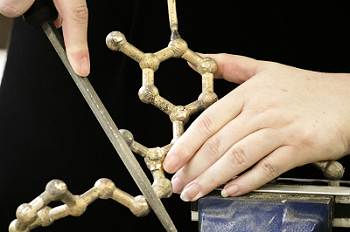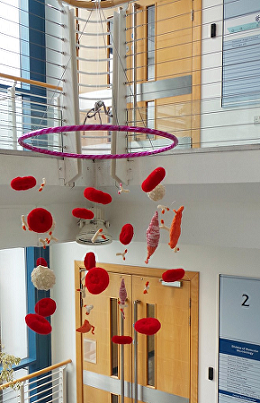ISNTD FESTIVAL
2019


SHOWCASE 2019: ART & EXHIBITIONS
DISEASE X: LONDON'S NEXT EPIDEMIC?
at the Museum of London
One hundred years after the outbreak of the deadliest wave of ‘Spanish Flu’, an epidemic that killed at least fifty million people, Disease X looks to the future for the next unknown lethal disease, and explores the deadly epidemics of past centuries. Find out more about how we created Disease X.
The new display uses the museum’s collections to show the effect of historic epidemics on London. It questions how we might learn from the past by looking at past successes, such as the eradication of smallpox and cholera. Notable objects from the display include the skeleton of a 9-month-old who died of smallpox and Queen Victoria’s mourning dress, worn following the death of her grandson and second in line to the throne, Prince Albert Victor.

A REPRESENTATION OF THE ANTIMALARIAL COMPOUND DDD107498
University of Dundee (Janice Aitken, Jordanstone College of Art & Design, and Ian Gilbert, Division of Biological Chemistry & Drug Discovery)




TRYPANOSOMES IN BLOOD
Knitted mobile by Dr. Angela Mehlert (Angela's Yarns) depicting how trypanosomes in the blood avoid the human immune system.

TRYPANO-STONE
by Lauren Carruthers (University of Glasgow)
I made this stone mosaic whilst on holiday. Making stone art each summer is a tradition my family has had for several years. In 2017 I made one which I called Trypano-stone. My sister went back 9 months later and sent me a photo.
9 months on, Trypanostone still persists! Drug resistance? Skin reservoir? Or maybe changing coats for the summer?
Trypanostone, to scale
Trypanostone, a stone mosaic of the trypanosoma parasites
LEISHMANIA PARASITES CUSHION
by Lauren Carruthers (University of Glasgow)
different colours to depict antigenic variation and coat switching for immune evasion.